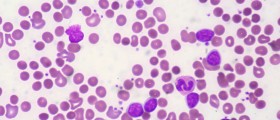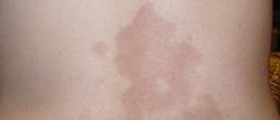
Introduction
Acute multifocal placoid pigment epitheliopathy is a certaintype of inflammatory disorder which affects the chorioid, retinal pigmentepithelium and the retina of an otherwise healthy person. It is a self-limiteddisease and it can be characterized by multiple placoid subretinal lesions ofthe posterior pole. These lesions usually affect both eyes and resolve over thecourse of a few months. After the condition gets resolved, it leavescircumscribed areas of retinal pigment epithelial disturbance. This medicalcondition normally affects healthy adults, and in most cases it affects whitepeople. There are no sexual predilections so it affects both men and womenequally. The average age of onset of acute multifocal placoid pigmentepitheliopathy is 27.
History
Prodromal symptoms include feelingof clumsiness, weakness of the extremities, numbness of the extremities,transient aphasia, joint tenderness, muscle tenderness, malaise, myalgia,nausea, vomiting, swollen lymph glands, headache, cough and fever. Early stagesof the condition may involve conjunctival episcleritis, photophobia,metamorphopsia, photopsia, blotchy scotomate and acute decrease in visualacuity. Late stages of the condition usually involve mild visual impairment,but some rare cases may also involve significant visual loss. In some casesacute acute multifocal placoid pigment epitheliopathy may reoccur, and when itdoes it commonly affects both eyes, but they do not have to be affected at thesame time. Some rare ocular manifestations of this medical condition includerelative afferent papillary defect, Koeppe nodules, anterior and posteriorsynechiae, limbal corneal thinning, cilliary flush, retinal venous dilation andtortuosity, retinal periphlebitis, serous retinal detachment and perilimbalcorneal stromal infiltrates.
Causes
Acute multifocal placoid pigment epitheliopathy is known forbeing associated with numerous different types of medical conditions. The listof possible causes and medical conditions which may be involved with thismedical condition includes adenovirus infections, meningococcal C conjugatevaccine, ulcerative colitis, systemic necrotizing vasculitis, clear cell renalcell carcinoma, use of hormone replacements, use of oral contraceptives,adenovirus 5 infection, toxoplasmosis, erythromycin therapy, thyroiditis,Penicillin therapy, tuberculin skin testing, swine flu vaccination, group Astreptococcal infection, hepatitis B vaccinations, nephritis, Lyme disease,mumps, sarcoidosis and tuberculosis exposure. The actual cause of acutemultifocal placoid pigment epitheliopathy cannot be determined. In some casesit may be affiliated with various sorts of viral illnesses and also systemicillnesses which may sometimes last for a few weeks The preceding symptoms ofthis medical condition usually include upper respiratory symptoms,gastrointestinal symptoms, malaise, headache and fever.








-and-Multiple-Sclerosis-Differences-And-Similarities_f_280x120.jpg)








Your thoughts on this
Loading...